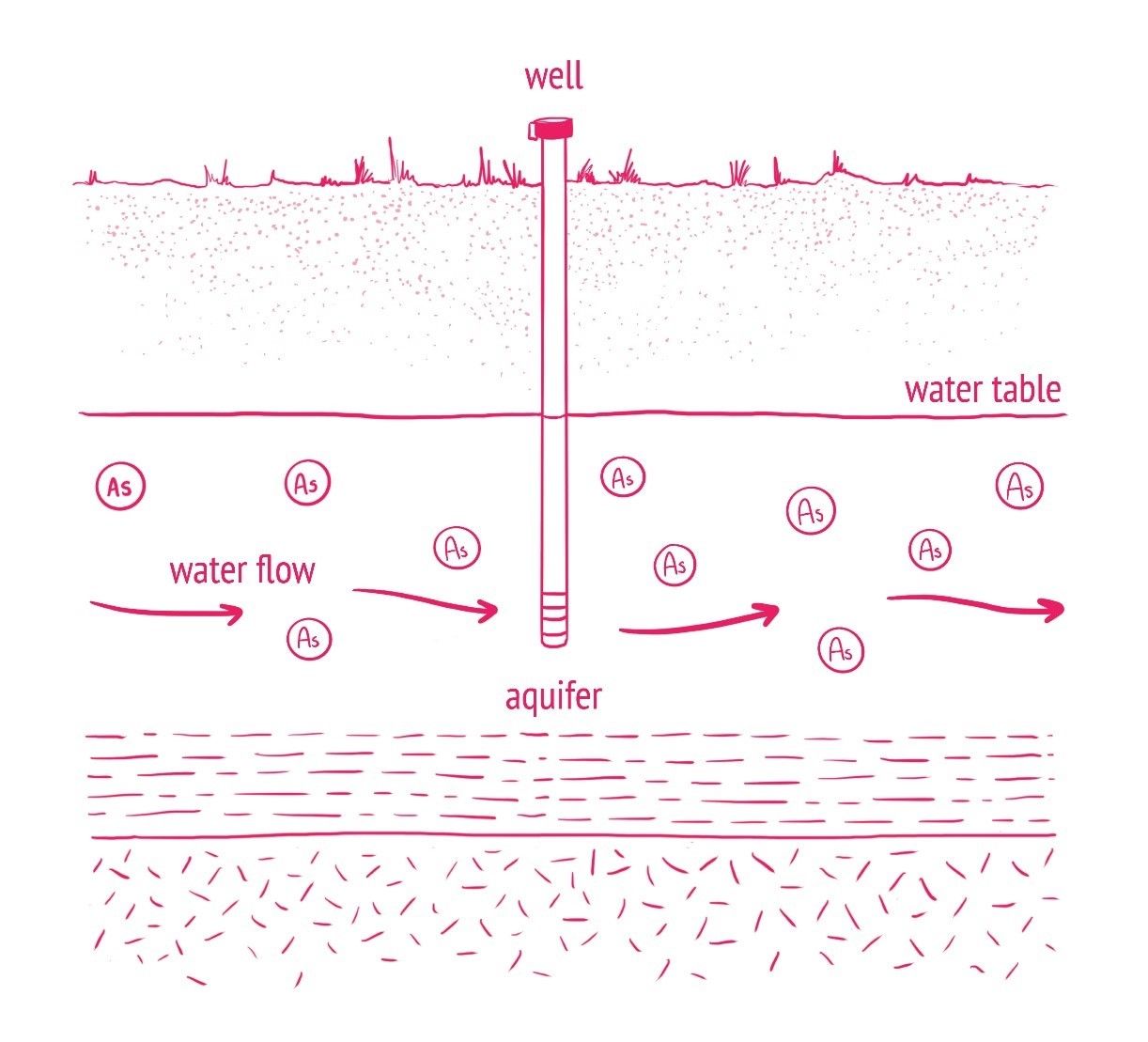National guidelines recommend that the concentration of arsenic be no greater than 5 µg/L for the protection of aquatic life in freshwaters.
What is it?
Arsenic is a metal-like element that does not break down in the environment. Arsenic is naturally-occurring in different kinds of minerals. It is most commonly found in in sulfur-containing rocks that also contain metals like gold, silver and lead. Human activities can cause arsenic to be released to the environment, especially in metal smelting and refining industries, and in the production of wood preservatives, herbicides, pharmaceuticals, and glass.
Arsenic takes different forms in water, including arsenate (AsO4), arsenite (AsO3), and organic arsenic forms. Arsenic is often incorporated in suspended particles in water and in aquatic sediments, which is an important exposure route for aquatic organisms.

A well known location of arsenic contamination is the Giant Mine in the Northwest Territories, which produced arsenic trioxide as a waste product of gold extraction for decades while it was operating. Today, hundreds of thousands of tons of arsenic trioxide dust is stored in underground chambers at the closed mine site.
Why does it matter?
Arsenic is toxic to aquatic organisms, especially bugs and algae. Arsenic is also toxic to humans, and can cause serious illness, including cancer.
The form that arsenic takes in water is influenced by the amount of available oxygen, as well as the presence of other elements. Microbes (tiny organisms, like bacteria) can convert inorganic arsenic to organic forms. Organic forms of arsenic are more toxic to fish and bugs because they are more easily absorbed (or bioavailable).

Drinking water obtained from groundwater wells can have naturally-occurring or human-induced high concentrations of arsenic.
How is it measured?
Arsenic is measured in water and sediment samples sent to a laboratory for analysis, often as part of a “metals suite” that measures multiple elements. In water, the relative amount of arsenic associated with particles can be determined by comparing filtered (dissolved) and unfiltered (total) sample results.
Related to Arsenic: pH, dissolved oxygen and oxidation-reduction potential can influence the form and therefore the toxicity of arsenic.